Self-adhesive film and stickers for the bathroom. It's easy and fast way to refresh the design!
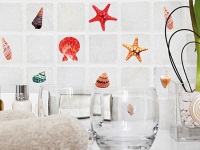
Sometimes we are so eager to change the interior design, but money and time are woefully short of adequate repair. You can use budget materials, but if the "change of decorations" is scheduled in the bathroom, not every one of them will be suitable. Constant humidity, steam and temperature fluctuations can ruin the surface with the wrong finish. But you can find a way out of any situation, and in the case of the bathroom, it will be the well-known ordinary self-adhesive film for the bathroom.
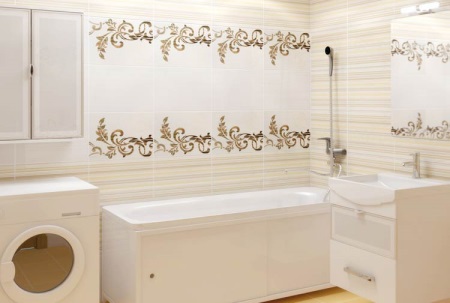
Advantages
Self-adhesive film and stickers for the bathroom have many advantages, thanks to which they are quite often used in the interior:
- A variety of colors - For film and stickers there are no restrictions in terms of color or patterns. On the market of cladding materials you can find self-adhesive with a glossy sheen or matte finish, monochrome or with a pattern, pearlescent and imitation of different materials: crumpled paper, wood, stone, marble, roasted foil, leather, etc.
- High level of resistance to aggressive environmental conditions - the film is not afraid of sudden temperature changes, it is absolutely waterproof. It can withstand heat up to 80о С. It is ideal for the bathroom, as it can be equated to ceramic tile in terms of resistance to water and steam.
- Long-lasting and easy to care for - for many years, it does not fade or wash out. Various contaminants, even kitchen grease, can be easily removed from the surface of the film. As a care measure, it is enough to wipe it with a damp cloth.
- Low cost - Compared to other cladding materials, self-adhesive film is the most budget-friendly option. Its low cost does not mean that the attractiveness of the pasted surface will decrease.
- Easy gluing - It can be glued rather quickly and easily, and if necessary, removed. This allows from time to time to change the coating of the surface lined with film. A huge plus for those who like to change. In addition, it is suitable for gluing to any kind of material.
- Variety of gluing options - It can be used to create different shapes and patterns on surfaces, to zoned spaces, and to glue overhangs and curves with ease. The ability to purchase only the necessary amount of material, rather than a whole roll, allows you to combine different variants of colors in one room.
Disadvantages
- The main disadvantage of self-adhesive film are the requirements for the pasted surface: it must be perfectly flat and clean.
- Also, it is not always possible to glue the film yourself on a surface of large size.
Stickers do not have these disadvantages.
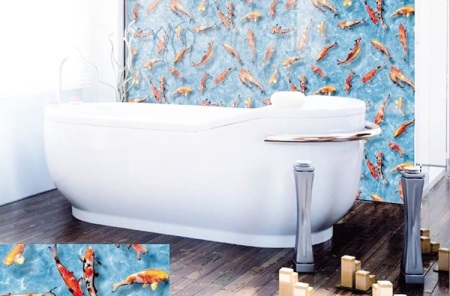
Self-adhesive film (or as it is also called "self-adhesive") is the best material for "quick repairs", including in rooms with frequently changing temperature and humidity conditions.
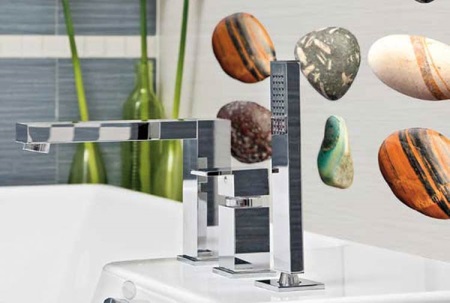
Interesting will look and volumetric stickers, which can always be removed and pasted elsewhere, and on the surface of them will not remain even a trace.

What materials are suitable for pasting
Self-adhesive films and stickers can be used for all types of surfaces and materials. Wood and metal are equally suitable. It adheres well to plastered walls, ceramic tile, cabinet doors, glass, and even cork. Synthetic materials are best moistened before pasting, this will allow you to quickly and easily level the film.
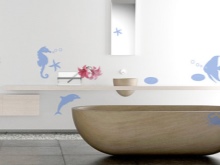
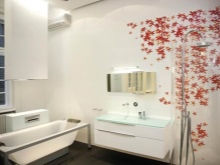
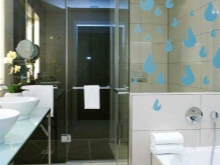
Recommendations
Like any other material, self-adhesive film has several nuances in terms of installation. If you know them all, the process of gluing will not take much time, and the work will be done qualitatively and effectively.
First and most importantly, the surface to be pasted must be perfectly flat and free of dust and grease. If this requirement is not met, the self-adhesive will lay unevenly, all the bulges and depressions will be visible, and the dust layer between the materials will contribute to the fact that the film will quickly come off or not stick at all. It is best to use acrylic formulations for priming.
To make it easier to spread the material, use a trowel, rubber roller or felt racket.
Preparatory work
The first stage of finishing the surface with self-adhesive film is the alignment of the surface and its cleaning. The main condition for high-quality work on the pasting - a well-prepared surface: clean and thoroughly degreased.
Walls and plasterboard must be puttied, then wiped with a fine mesh, wash off the dust and apply primer.
Wood is often sanded and coated with a layer of varnish.
Glass and metal are recommended to be lightly wet.
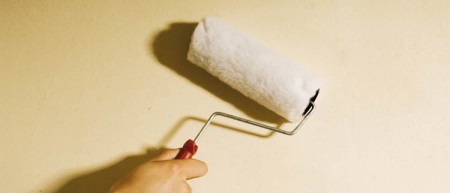
How to Cut Film
Properly cut material is already half of a successful job. You don't have to be an expert to cut the film properly. It is necessary to take a ruler, a pencil and a cutting tool: a knife or scissors. The main condition is that the edges of the self-adhesive film must be perfectly straight.
Depending on the type of colors cut the film on the front side (for a self-sticker with a pattern or pattern) or the back side. The ruler measure out the necessary dimensions, make pencil marks in several places. Draw a line and cut off the desired size piece with a margin of a couple of centimeters.
If you want to create a decorative element or applique with the film, it is necessary to trace the desired drawing with a stencil, and then neatly cut out with scissors.
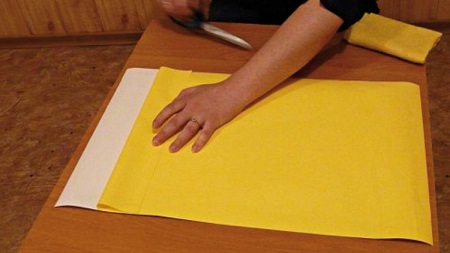
Decorating the room
Usually on the back you can find instructions with a sequence of actions.
First you need to take the cut material and separate the corner of the film from the paper backing. Apply it to the surface and start gluing, gradually separating the film from the remaining paper, first by a few centimeters from the edge, and then completely. To ensure that the film lies flat, gently smooth it out with a squeegee, flattening air bubbles from the center to the edges and smoothing out the folds.
When pasted corners, the film is cut at an angle of 45 degrees, so there was no overlapping of layers. And for sticking the film on rounded and convex surfaces, you can use a construction or even an ordinary hair dryer. With its help the self-adhesive becomes hotter and more elastic, which allows it to fix on the surface of any shape. In general, heating the film promotes better adhesion to the base material.
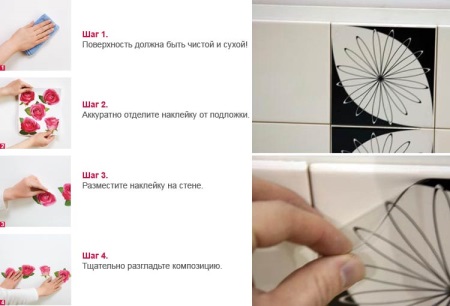
Rapid application on metal and glass surfaces
There is also a quick method of attaching a self-adhesive film. It is mainly used to film glass and metal surfaces. Water is used for this purpose. It is most convenient to use a sprayer. The surface should be well wet and then apply the film, completely separated from the substrate. Thanks to the water, it will not stick immediately, allowing it to smooth out on the surface. Then use a soft spatula to squeeze out the excess water and smooth out the folds and bubbles.
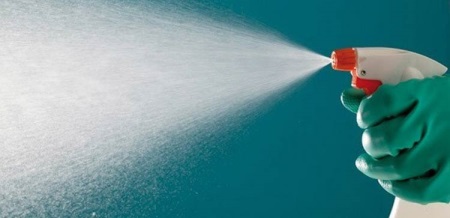
Possible problems during pasting on the surface and their solutions
In the process of pasting surfaces with self-adhesive film, not always everything goes smoothly, especially if you do it for the first time in your life. Minor defects can be corrected quite easily.
So, air bubbles are removed with an ordinary needle. It is enough to poke a small hole and gently press the film, so that the air can escape through it, and then smooth it out with a spatula.
Creases and folds can be removed in a few hours after gluing. To do this, you need to peel the film with a sharp movement (but carefully enough not to tear it), and then glue it back on.
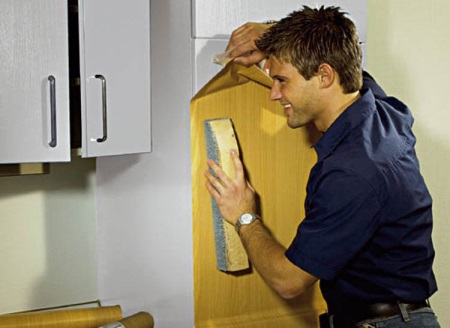
If the film is loose from the surface within a few hours of gluing, it probably wasn't clean enough. There may have been dust particles or grease stains left on it. In this case, you can try to re-treat the surface and glue the film back on. But if a layer of dust has remained on the sticky side of the film, it is unlikely that it will stick again. In this case you will have to replace the film on the problem area.
Care
In care, the self-adhesive film is quite unpretentious. This is its great advantage.
The best way to clean the self-adhesive film is to use liquid soap and warm water.
To remove greasy dirt, you can use a dish detergent. The film is absolutely not afraid of water, as it is covered with a protective PVC layer. Therefore, you do not have to worry about it rolling away like paper under the influence of moisture if you rub it.
If the above methods are not effective, vodka or ethyl alcohol can be used.
Never use aggressive abrasives or any kind of strong solvents. They can ruin the coating with scratches or blur the paint.
Self-adhesive film - the best material for the bathroom, because it can withstand the conditions of the room, and care for it is not difficult. This inexpensive material allows you to turn a boring bathroom into a stylish and bright room according to the latest trends in the world of design.





I bought stickers in the bathroom for my child. My daughter is 2.5 years old, and when she bathes she makes up different stories for the sticker characters. We have drawn animals. The stickers are handy. If we get tired of them, we take them off and put new ones on!